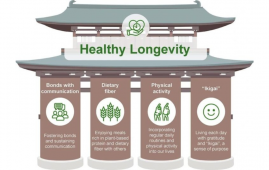

The sun controls our internal clocks, regardless of whether we are morning larks or night owls. The length and quality of our sleep can be impacted by seasonal variations in day length and light exposure. But it’s challenging to understand how this works in real life. Although studies in which participants rated their own sleep length revealed that sleep duration increased during the winter, precise measurements are required to ascertain how the seasons affect sleep.
Now, research on sleep problems has been published in Frontiers in Neuroscience, demonstrating that even in a city population with disturbed sleep, people experience more REM sleep in the winter than in the summer and less deep sleep in the autumn.
“Possibly one of the most precious achievements in human evolution is an almost invisibility of seasonality on the behavioral level,” said Dr. Dieter Kunz, corresponding author of the study, based at the Clinic of Sleep & Chronomedicine at the St Hedwig Hospital, Berlin. “In our study, we show that human sleep architecture varies substantially across seasons in an adult population living in an urban environment.”
Researching Human Sleep
At the Charité Medical University of Berlin, a group of researchers under the direction of Aileen Seidler gathered 292 individuals who had polysomnography, a type of sleep study, at the St. Hedwig Hospital. These investigations are frequently conducted on patients who have sleep-related issues using a specialized laboratory where patients are requested to fall asleep naturally without an alarm clock and the length, type, and quality of their sleep may be tracked. This creates a sizable study group uniformly distributed throughout the year, allowing for the investigation of month-to-month variations despite the sleep disorders’ ability to alter the outcomes.
Patients taking sleep-related drugs, technical difficulties with the polysomnography, and REM sleep latency longer than 120 minutes—signs indicating the first REM sleep episode may have been skipped—were also removed. When these exclusions were done, 188 patients were still present. The majority of their diagnoses exhibited little seasonal variation, while sleeplessness was more frequently identified as the year’s end approached.
More REM Sleep in Winter
The patients were located in an urban setting with little exposure to natural light and significant light pollution, which should have an impact on any seasonality controlled by light. Nonetheless, the researchers discovered small but significant variations between the seasons. The difference in total sleep time between the winter and summer seemed to be roughly an hour, although this finding was not statistically significant. On the other hand, REM sleep lasted 30 minutes longer in the winter than it did in the summer. It is well recognized that the circadian clock, which is impacted by changing light, and REM sleep are inextricably intertwined. Although the authors acknowledged that these findings would need to be confirmed in a population without sleep issues, the seasonal shifts may be even more pronounced in a population that is healthy.
“This study needs to be replicated in a large cohort of healthy subjects,” cautioned Kunz.
Although most people’s waking time is currently largely out of their control, due to school or work schedules, society might benefit from accommodations that would allow humans to respond more effectively to the changing seasons. In the meantime, going to sleep earlier in the winter might help accommodate human seasonality.
“Seasonality is ubiquitous in any living being on this planet,” said Kunz. “Even though we still perform unchanged, over the winter human physiology is down-regulated, with a sensation of ‘running-on-empty’ in February or March. In general, societies need to adjust sleep habits including length and timing to season, or adjust school and working schedules to seasonal sleep needs.”
more recommended stories
 E-Cigarette Use and Heart Attack Risk in Former Smokers
E-Cigarette Use and Heart Attack Risk in Former SmokersKey Takeaways for Clinicians and Nurses.
 Ultramarathon Physiology: What HCPs Should Know?
Ultramarathon Physiology: What HCPs Should Know?Ultramarathon Metabolism: What Happens to the.
 High-Intensity Training and Oxidative Stress Insights
High-Intensity Training and Oxidative Stress InsightsNew Evidence Linking High-Intensity Training and.
 Sterilized Fermented Beverage for Obesity: New Evidence
Sterilized Fermented Beverage for Obesity: New EvidenceEarly Insights Into a Sterilized Fermented.
 Cardiovascular Risk and Sudden Cardiac Death in Diabetes
Cardiovascular Risk and Sudden Cardiac Death in DiabetesRising Sudden Cardiac Death (SCD) Risk.
 Perinatal Mental Health Challenges Highlighted in New Study
Perinatal Mental Health Challenges Highlighted in New StudyMental Health Challenges in New Parents:.
 Walking Speed Before Hip Replacement Predicts Recovery
Walking Speed Before Hip Replacement Predicts RecoveryNew Evidence Points to a Simple,.
 How Soybean Oil Impacts Weight Gain and Metabolism
How Soybean Oil Impacts Weight Gain and MetabolismWhy Soybean Oil May Affect Metabolism.
 New Malaria Prevention Insights From African Biostatistics
New Malaria Prevention Insights From African BiostatisticsHow New Data Is Reframing Malaria.
 World Summit Outlines Core Principles for Healthy Longevity
World Summit Outlines Core Principles for Healthy LongevityWhy Healthy Longevity Demands a New.

Leave a Comment